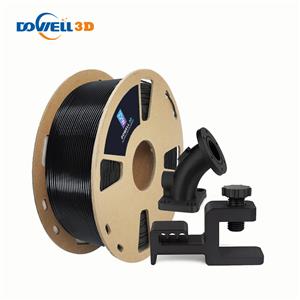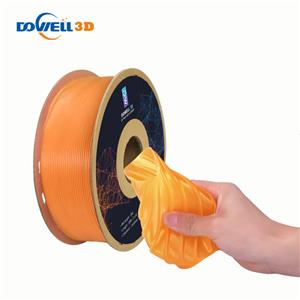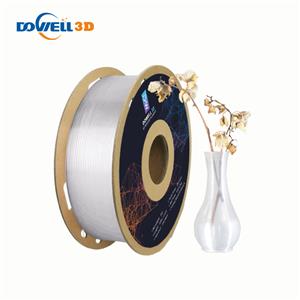What Are the 6 Different 3D Printer Filament Types? -- PLA
What Are the 6 Different 3D Printer Filament Types?
3D printing is difficult, and choosing the right filament is even more so. Relax, we've got you covered.
Consumer 3D printers are no longer restricted to ABS and PLA filaments. The popularity of additive manufacturing technology has led to the influx of many engineering plastics. Although ABS and PLA remain popular, many 3D printing enthusiasts have switched to newer materials.
So, here is everything you need to know about different 3D printing filaments and how to choose one for your specific needs.
How to Choose a 3D Printing Filament
3D printing is unlike most run-of-the-mill hobbies. It involves sophisticated robots creating complicated objects using exotic materials. Like all advanced engineering endeavors, 3D printing relies on the users’ ability to read and follow technical data sheets. Knowing how to make sense of these documents is key to knowing which 3D printing filament to use for specific applications.
There’s no need to bother with this if your 3D printing needs are restricted to cosmetic prints because PLA is all you will ever need. Printing functional parts, however, needs an understanding of various filament parameters, such as tensile strength, toughness/flexibility, heat resistance, durability, creep, and warping.
So, what are the best 3D printing filaments, and when should you use one over another?
1. PLA (Polylactic Acid)
Polylactic Acid is to 3D printing what training wheels are to bicycles. It’s incredibly easy to print on even the cheapest 3D printers. With print temperatures beginning as low as 180°C, you don’t need an all-metal hot end to print this filament safely. PLA doesn’t even require a heated bed, as long as the ambient room temperature is maintained above 20°C.
The material practically doesn’t warp and can bridge extremely well if you give adequate part cooling.
The bottom line: it’s incredibly difficult to ruin a PLA print. This allows beginners to gradually learn the many complicated aspects of 3D printing without hitting the brick wall of repeated print failures. As a beginner, sticking to PLA makes it easy to grasp the fundamentals of bed adhesion, first layer calibration, overhangs, and bridging. PLA is the optimal way to test the limits of 3D printing without having to second-guess your printer calibration and slicer settings.
Printability: Excellent
Color Selection: Excellent
Heat Resistance: Poor
Tensile Strength: Excellent
Toughness: Poor
UV Resistance: Excellent
Moisture Resistance: Excellent
Creep Resistance: Poor
When Should You Use PLA 3D Printing Filament?
PLA is great for cosmetic 3D prints but not so much for anything else. Despite its high tensile strength, it lacks toughness because the material is too hard to flex. This makes it brittle and susceptible to cracking in applications requiring impact resistance and bending. Its low-temperature printability also translates into poor heat resistance. PLA prints warp when subjected to direct sunlight or in-car conditions due to the material’s low glass transition temperature of 57°C.
PLA’s tendency to creep, or to permanently deform under load at room temperature, makes it unviable for any functional print that either uses fasteners or serves any load-bearing purpose. Consequently, most 3D printing enthusiasts move to other materials once they have mastered slicer settings and 3D printer tuning with PLA.




